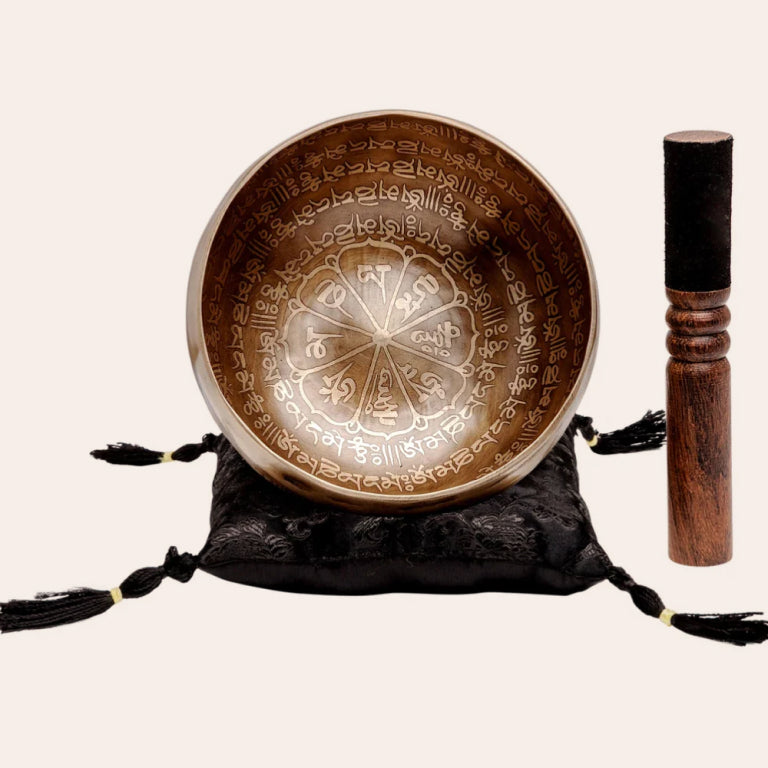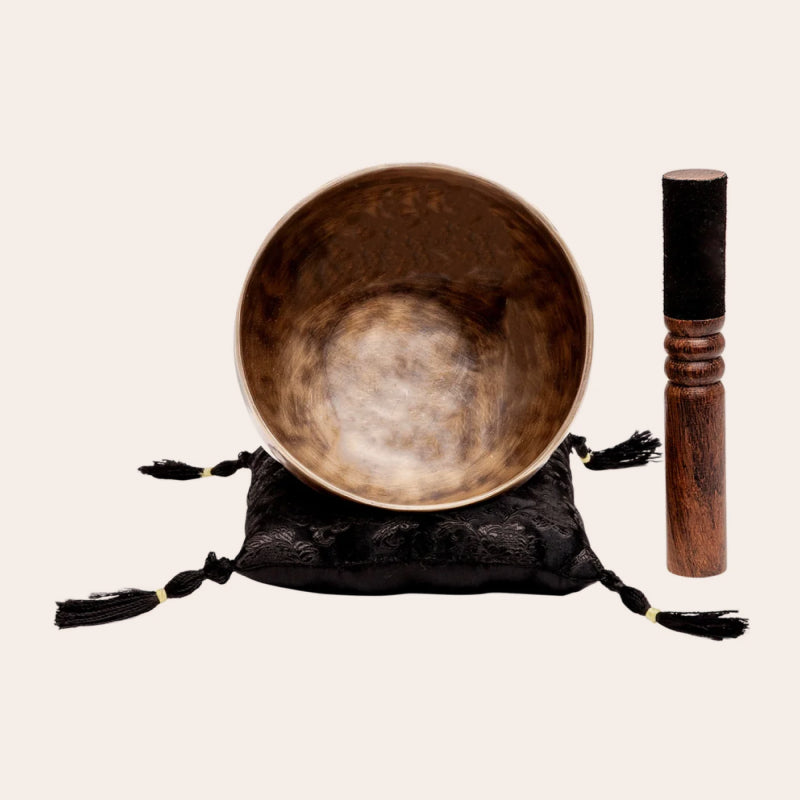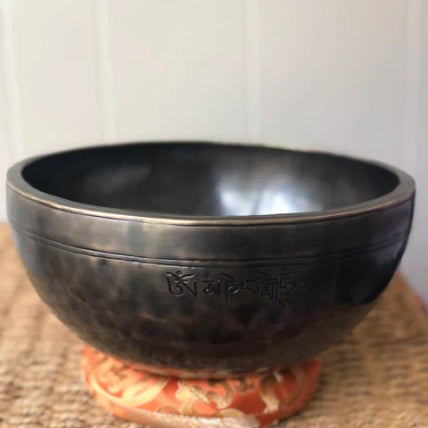Tingsha bells are a fascinating and culturally rich instrument; they are embedded in the history of Buddhism.
These small cymbals, often connected by a leather strap, produce a distinctive, clear, and resonant sound when struck together. Let's explore their origins, traditional uses, current manufacturing processes, and practical applications in meditation and healing.
Origins and Traditional Uses
Tingsha bells originate from Buddhism, where they have been used for centuries. Traditionally, these bells are integral to rituals and ceremonies. Their primary purpose is to invoke a sense of spiritual awareness and to mark the beginning and end of meditation sessions. The clear, penetrating sound of the tingsha is believed to help clear the mind, creating a conducive atmosphere for meditation.
Historically, monks used tingsha bells during specific rituals to clear negative energy, call for prayer, and as offerings to the deities. The sound produced by the bells is considered sacred, meant to align the practitioner with higher spiritual realms.
Craftsmanship and Modern Production
Originally, tingsha bells were crafted by skilled artisans using brass or bronze. This meticulous craftsmanship ensured that each pair of tingsha bells produced a harmonious and balanced sound. The traditional method involved hand-casting and tuning each bell to achieve the desired resonance.
Today, tingsha bells are still made using traditional methods! Many authentic tingsha bells are still produced in Nepal and India (ours are made in Nepal) where artisans continue to follow age-old techniques.
The Piercing Tone: Why It Works
The high-piercing tone of tingsha bells is not just a matter of volume or pitch; it is a carefully crafted frequency that resonates deeply with both the environment and the human psyche. The sharp, clear sound waves produced by striking the bells cut through ambient noise and mental chatter, creating a moment of pure auditory focus. This intense sound can seem almost otherworldly, drawing immediate attention and fostering a heightened state of awareness.
Scientifically, the high-frequency sound waves generated by tingsha bells can stimulate the brain’s alpha and theta wave activity, which are associated with deep relaxation and meditative states. This frequency can also cause a phenomenon known as entrainment, where the brain’s electrical activity synchronizes with the rhythm of the sound, leading to enhanced mental clarity and emotional calm.
Practical Applications
Tingsha bells have found a place in contemporary meditation and healing practices beyond their traditional religious uses. Here are some practical applications:
-
Meditation: Striking the tingsha bells at the beginning and end of a meditation session helps to create a clear mental boundary, signaling the transition into and out of meditative states. The sound aids in focusing the mind and enhancing concentration. To use them, hold the bells by the leather strap and gently strike them together, allowing the sound to resonate fully.
-
Sound Healing: In sound therapy, tingsha bells are used for their vibrational qualities, which are believed to promote healing and balance in the body. The sound waves produced by the bells can help in reducing stress, anxiety, and promoting overall well-being. Practitioners often use them to target specific chakras or energy centers, striking the bells and allowing the sound to wash over the body, harmonizing the energy flow.
-
Energy Clearing: Tingsha bells are often used to clear negative energy in a space. By walking through a room and ringing the bells, practitioners believe they can dispel stagnant or negative energy, creating a more positive and harmonious environment. This practice can be particularly effective in spaces that feel heavy or cluttered energetically. To use tingsha bells for energy clearing, simply strike them and move through the space, allowing the sound to permeate every corner.
-
Mindfulness Practice: Tingsha bells can be used to bring attention back to the present moment. The sound serves as a gentle reminder to remain mindful and aware, making it a valuable tool in daily mindfulness exercises. For instance, ringing the bells at random intervals can remind individuals to pause, breathe, and reconnect with their surroundings.
Effects on Energy and Environment
The sound of tingsha bells can have a profound effect on both the people who hear it and the energy of the space in which it is used. The high-frequency sound waves produced by the bells are believed to break up dense or stagnant energy, creating a more vibrant and dynamic atmosphere. This can be particularly useful in spaces used for healing, meditation, or any activities requiring a clear and focused mind.
For individuals, the sound of tingsha bells can promote relaxation and mental clarity, helping to reduce stress and anxiety. The piercing tone can cut through the mental fog, bringing a sense of presence and immediacy. This auditory focus can enhance meditation, making it easier to enter deep states of contemplation and awareness.
Conclusion
Tingsha bells are more than just musical instruments; they are a bridge between traditions and modern wellness practices. Their clear, resonant tones continue to captivate and heal, offering a timeless reminder of the harmonious connection between sound, mind, and spirit. Whether used in traditional rituals or contemporary meditation, tingsha bells embody a profound simplicity that resonates with the essence of our inner and outer worlds.
We invite you to browse the Tinghsa Bella that craftsmen make specifically for you, at The Ohm Store by going to this link.










